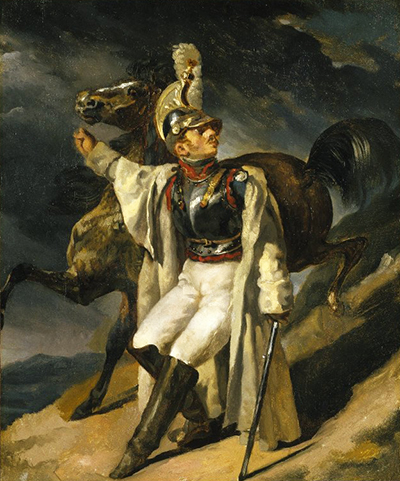The Wounded Cuirassier dates from 1814 and continues the combination of military and equestrian themes within the oeuvre of Theodore Gericault.
Gericault chose to depict a style of military painting that had done been done much before. Rather than the standard theme of bravery and victory, this soldier appears vulnerable as he copes with injury. His pose is unstable, almost requiring his horse just to stand. The downhill level also seems to add to his difficulties.
The artist inserts a highly volatile sky scene to add to the feeling of sadness and danger, attempting to be somewhat more honest about the reality of war and battle. The pains of war are something which appeals to a more thoughful artist who looks beyond just the aesthetic of a situation - see how the wounded Cuirassier leans on a makeshift walking stick as he fights to hold his posture.
A more standard approach to paintings of battle would be Gericault's The Charging Chasseur, which also ranks as one of his most famous paintings. At the time of his career, war was very much an issue within France and right across Europe with patriotic artists taking up the challenge of depicting their own countries or regions in a positive light.
Le Cuirassier blessé quittant le feu, to give it its original French title, is produced with the same standard selection of oil colours that persisted throughout Gericault's career. To provide an element of historic context, the painting captured failure from the French army and the defeat of Napoleon. In order to save some of the soldier's blushes, his actual injuries are not displayed literally, only suggested at. To do so may have been considered unsavoury and potentially unpatriotic.
Gericault produced two copies of this painting and they are on display at the Musée du Louvre and at the Brooklyn Museum.




